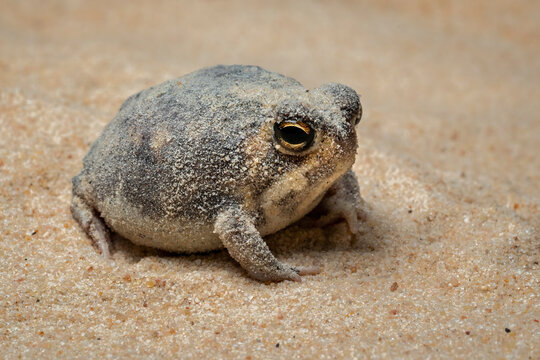Check Out Rain Frog for Sale: Raise Your Family Pet Video Game with a Special Amphibian Close Friend!
Check Out Rain Frog for Sale: Raise Your Family Pet Video Game with a Special Amphibian Close Friend!
Blog Article
The Best Reptile Enclosures: Exactly How to Develop the Perfect Environment
Creating the perfect environment for reptiles is not nearly putting them in a container or enclosure; it includes a thoughtful factor to consider of various elements that add to their general wellness. From the size of the room to the kind of substrate utilized, every component plays a critical duty in giving an environment where your reptile can grow. By comprehending the details needs of your reptile varieties and implementing the ideal habitat setup, you can guarantee their health and wellness and joy in captivity.
Choosing the Right Room Dimension
When selecting an enclosure dimension for reptiles, it is crucial to consider their all-natural behaviors and room needs to guarantee their wellness and health. When it comes to habitat room, various reptile types have varying demands. Arboreal varieties like chameleons or tree serpents call for vertical area for setting down and climbing, while earthbound varieties such as bearded dragons or leopard geckos need even more floor room for discovering and thermoregulation. Aquatic turtles like red-eared sliders demand rooms with both water and acreage for swimming and basking.
A basic guideline of thumb is to offer enough area for the reptile to show natural behaviors, such as basking, concealing, climbing, and foraging. rain frog for sale. Poor room can lead to anxiety, behavioral issues, and also physical health troubles. Units must also permit the positioning of correct heating and lighting components, as well as ecological enrichment things like branches, hides, and rocks. By meticulously thinking about the details needs of the reptile types in inquiry, owners can produce an ideal and enriching habitat that promotes general health and encourages natural habits.
Establishing Correct Burner
To make certain the well-being and health of reptiles in their rooms, it is vital to carefully set up appropriate burner. Reptiles are ectothermic creatures, meaning they depend on external heat sources to manage their body temperature level. When establishing heating elements in a reptile unit, it is crucial to consider the details temperature demands of the species you are caring for. Various reptiles have differing temperature needs based on their all-natural habitat, so it is essential to research and recognize these requirements.
One typical and effective burner for reptile rooms is a heat lamp or ceramic heat emitter. These warm sources can be used to create a temperature level gradient within the room, allowing reptiles to relocate between warmer and cooler locations as needed. In addition, under-tank hot pad or warmth mats can be utilized to supply tummy warmth, which is particularly valuable for reptiles that need extra heat to assist in digestion.
Monitoring the temperature level within the unit using a thermometer is vital to ensure that the home heating elements are maintaining the proper temperature level array for your reptile. Frequently examine and change the burner as required to develop a healthy and balanced and comfortable environment for your scaly close friend.
Selecting Appropriate Illumination Components

Giving the Ideal Substrate
Selecting the appropriate substratum is crucial for developing a comfy and ideal atmosphere for reptiles in their rooms. Some reptiles, such as desert-dwelling species like bearded dragons, thrive on substratums like calcium sand or reptile rug, while others, like sphere pythons, like coconut husk or aspen bed linen to maintain moisture degrees.
Stay clear of substrates that can create impaction, such as loose substratums like sand or crushed rock, especially for reptiles recognized to ingest their bed linens. Regularly cleansing and changing the substrate is crucial to guarantee a hygienic and tidy atmosphere for your reptile.
Designing for Enrichment and Convenience
Thinking about the substratum's role in giving a foundation for all-natural habits and keeping a suitable atmosphere, boosting the reptile enclosure with appropriate designs is critical for both enrichment and convenience. Decors such as branches, rocks, hideouts, and synthetic plants not only produce a more visually attractive environment but likewise offer useful functions. Branches give climbing up opportunities for arboreal types, while rocks can work as basking places for heat. Hideouts provide shelter and security, decreasing stress and anxiety degrees for the reptile. Fabricated plants not only improve the visual appeals however browse around here likewise give concealing spots and enrichment by enabling the reptile to check out and connect with its environment. When decorating the room, it is crucial to consider the reptile's species-specific needs and behaviors to create a space that advertises physical and mental well-being. By including a variety of decors that mimic the reptile's all-natural habitat, owners can guarantee their pet's comfort and stimulate their all-natural reactions, inevitably bring about a better and much healthier reptile.
Verdict

Creating the ideal environment for reptiles is not simply regarding putting them in a container or enclosure; it involves a thoughtful consideration of numerous variables that contribute to their overall health.Selecting the suitable substrate is essential for creating a ideal and comfy setting for reptiles in their rooms. Some reptiles, such as desert-dwelling species like bearded dragons, thrive on substratums like calcium sand or reptile rug, while others, like sphere pythons, favor coconut husk or aspen bed linens to keep moisture levels.
By integrating a range of decors that imitate the reptile's all-natural habitat, owners can ensure their animal's comfort and promote my sources their all-natural reactions, ultimately leading to a happier and healthier reptile.
In conclusion, developing the suitable environment for reptiles involves picking the ideal room dimension, home heating aspects, lighting components, substrate, and designs.
Report this page